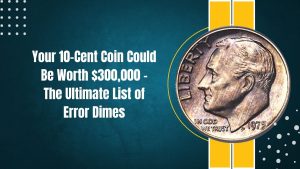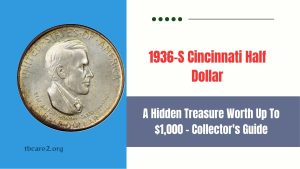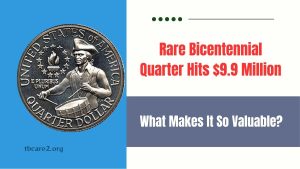Collecting rare coins is a captivating hobby that combines historical intrigue with the potential for significant financial gain. Among the most coveted are certain quarters and dimes, with some specimens valued at over $600 million. This article delves into the top three rarest quarters and dimes, exploring their origins, unique features, and the factors contributing to their extraordinary worth.
Contents
1. 1894-S Barber Dime
The 1894-S Barber Dime stands as one of the most enigmatic and valuable coins in American numismatic history.
History and Mintage
Minted in 1894 at the San Francisco Mint, only 24 of these dimes were produced, all in proof condition. The exact reason for such a limited mintage remains unclear, though theories suggest they were struck either to balance a bookkeeping discrepancy or as special gifts for bankers. Today, only nine specimens are known to exist.
Value and Notable Sales
The rarity and mystery surrounding the 1894-S Barber Dime have led to staggering auction prices. In 2007, one sold for $1.9 million, and in 2016, another fetched $1,997,500. These figures underscore the coin’s status as a numismatic treasure.
2. 1804 Draped Bust Quarter
The 1804 Draped Bust Quarter is another gem that commands immense value due to its rarity and historical significance.
History and Mintage
Produced in 1804, this quarter features the Draped Bust design by Robert Scot. With a mintage of only 6,738 pieces, it is one of the scarcest quarters ever issued by the U.S. Mint.
Value and Notable Sales
High-grade examples of the 1804 Draped Bust Quarter have achieved impressive prices at auction. In 2013, a specimen graded MS-64 by PCGS sold for $381,875, reflecting the coin’s desirability among collectors.
3. 1975 No-S Roosevelt Dime
A modern rarity, the 1975 No-S Roosevelt Dime is a proof coin missing the ‘S’ mintmark, indicating it was inadvertently struck without the mark of the San Francisco Mint.
History and Mintage
Intended for collectors, proof coins are typically struck with a high degree of precision. However, a few 1975 Roosevelt Dimes were mistakenly produced without the ‘S’ mintmark. Only two such specimens are known to exist, making it an exceptionally rare error coin.
Value and Notable Sales
The scarcity of the 1975 No-S Roosevelt Dime has led to remarkable auction results. In 2019, a PR68-graded example sold for $456,000, highlighting the significant value attributed to modern mint errors.
| Coin | Year | Mintage | Known Specimens | Notable Sale Price |
|---|---|---|---|---|
| 1894-S Barber Dime | 1894 | 24 | 9 | $1,997,500 (2016) |
| 1804 Draped Bust Quarter | 1804 | 6,738 | Few hundred | $381,875 (2013) |
| 1975 No-S Roosevelt Dime | 1975 | Unknown | 2 | $456,000 (2019) |
Factors Influencing Value
Several key factors contribute to the astronomical values of these coins:
- Rarity: Limited mintage numbers and surviving specimens significantly boost a coin’s value.
- Historical Significance: Coins from notable periods or with unique backstories attract higher interest.
- Condition: Coins in superior condition (e.g., uncirculated or proof) command higher prices.
- Market Demand: The desirability among collectors can drive prices to extraordinary levels.
The allure of rare quarters and dimes lies not only in their monetary value but also in the rich history and intrigue they embody. For collectors and enthusiasts, these coins represent the pinnacle of numismatic achievement, offering a tangible connection to the past and a testament to the enduring fascination with rare currency.
FAQs
Why are 1894-S Barber Dimes so rare?
Only 24 were minted, possibly to balance a bookkeeping discrepancy or as special gifts, and only nine are known to exist today.
What makes the 1975 No-S Roosevelt Dime valuable?
It’s a proof coin mistakenly struck without the ‘S’ mintmark, with only two known specimens, making it exceptionally rare.
How does coin condition affect value?
Coins in better condition, such as uncirculated or proof specimens, are more desirable and command higher prices.
What is a mintmark, and why does its absence matter?
A mintmark indicates the mint where a coin was produced. Its absence, especially on proof coins, can signify a rare minting error, increasing the coin’s value.
How can I determine the value of my coin?
Consulting with a professional numismatist or referring to reputable coin value guides can provide an accurate assessment of a coin’s worth.







